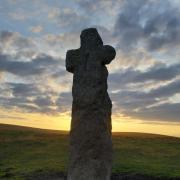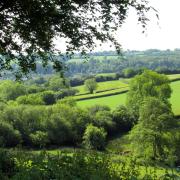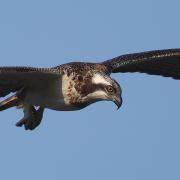The coastline of Devon, renowned for attracting beach-loving tourists in summer, can be inhospitable in winter. To offer protection to our sea-going vessels we constructed harbours, most of which are in sheltered locations which also attract wildlife. As a nature-lover I like to explore harbours immediately after a winter storm when it is often possible to find a surprising range of birds taking shelter and finding food.

There are a few wading birds that specialise in finding food on rocky coasts. Turnstones, for example, are named because of their habit of turning stones over to find food underneath but they also push and pull at seaweed looking for prey. Migrating to Devon from Arctic Canada each winter, they more recently they have become opportunists, finding food on harboursides and often becoming very tame. The purple sandpiper sometimes associates with turnstones, it’s not as colourful as its name suggests but it can be seen around some harbours in winter including at Brixham breakwater.

In the water, around the fishing boats we might find shags or cormorants. One way to identify between these two species is to look at how they dive. Cormorants literally slip under water a bit like a snake; shags, which have finer heads and bills, need to jump to get the momentum to submerge. After a good south westerly wind there is a fair chance of spotting a great northern diver, in larger harbours where they dive to find crabs.

Cliff-nesting seabirds such as kittiwakes, guillemots and razorbills spend their winter out at sea, but rough weather can change their plans when any of these species can be seen in harbours.
Finally, I feel the need to talk about gulls. I am going to resist using the term ‘seagull’ because this implies they are all the same and actually we have about 10 species of gull in Devon each winter and harbours are a great place to look for them. The most familiar, because it is the tamest and most problematic, is the herring gull, this is the one that pinches our chips. The herring gull is quite large, it has a pale grey back and a red spot on its beak. Try to find a larger gull with a darker back, this is a great black-backed gull. If you are really lucky you might find one of our very rare winter gulls. The glaucous gull is about the size of a great black-backed gull and the Iceland gull is about the size of a herring gull but both are very pale grey, almost white.
To see more of David’s photography visit: davidchapman.org.uk




























